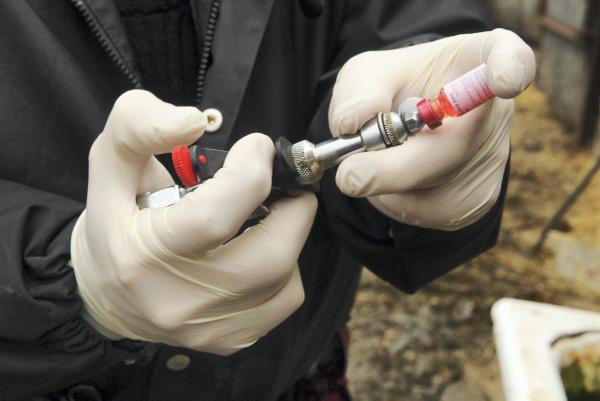The number of cattle that have reacted positively to the skin test for bovine TB and been removed off NI farms over the first five months of 2016 is the highest it has been for 12 years.
In total, 4,955 cattle were taken as reactors compared with 4,457 for the same period in 2015 and 3,461 in the first five months of 2014. In 2010, the equivalent figure was only 2,863.
However, while the number of reactor animals is up, the number of herds with reactors is little changed. To the end of May 2016, a total of 749 herds had at least one reactor compared with 782 herds in 2015 and 625 herds for the same period in 2014.
Also, herd incidence (the number of new reactor herds as a percentage of the total tested) to the end of May 2016 is at 5.12%. For the whole of 2015, the figure stood at 7.15%. At the end of May 2016, a total of 9.3% of herds across NI were under some form of TB restriction.
Severe
The main reason for the increased number of reactor animals seems to be a more severe interpretation of test results applied by vets, particularly in herds with a history of TB.
It is understood that the decision by DAERA to apply this more severe interpretation was implemented in mid 2015.
The policy is based on analysis of historical data, which shows that an animal that is inconclusive at a standard test, but positive under severe interpretation, is eight times more likely to have TB than an animal that tested negative.
It is hoped that taking out more animals now will result in significant reductions in TB levels in future years.
Despite that, the fundamental issue remains that the skin test is not 100% accurate, and leaves behind some animals that are actually infected with the disease.
Costs
According to the most recent figures from DAERA, bovine TB in NI costs taxpayers £27m per year, with an additional £10m of compliance costs borne by farmers.
A TB strategic partnership group, tasked with developing a plan to finally rid NI of the disease, are due to publish their long-awaited final report this autumn.
Reports have emerged this week suggesting that badger culling to control bovine TB is to be extended to cover five new areas in the southwest of England.
On enquiry, a Defra spokesperson did not confirm to the Irish Farmers Journal that selected areas have been finalised. However, the spokesperson said: “Natural England is currently considering applications for further badger control licences as part of the usual licencing process.”
Culling currently takes place in three regions with the west Gloucestershire and west Somerset regions entering the fourth year of culling this September and the north Dorset area entering its second year.
In response to the reports of new culling areas, British Veterinary Association president Sean Wensley said that there is a need to control the wildlife reservoir of the disease as part of a comprehensive strategy to eradicate bovine TB.






 This is a subscriber-only article
This is a subscriber-only article










SHARING OPTIONS: